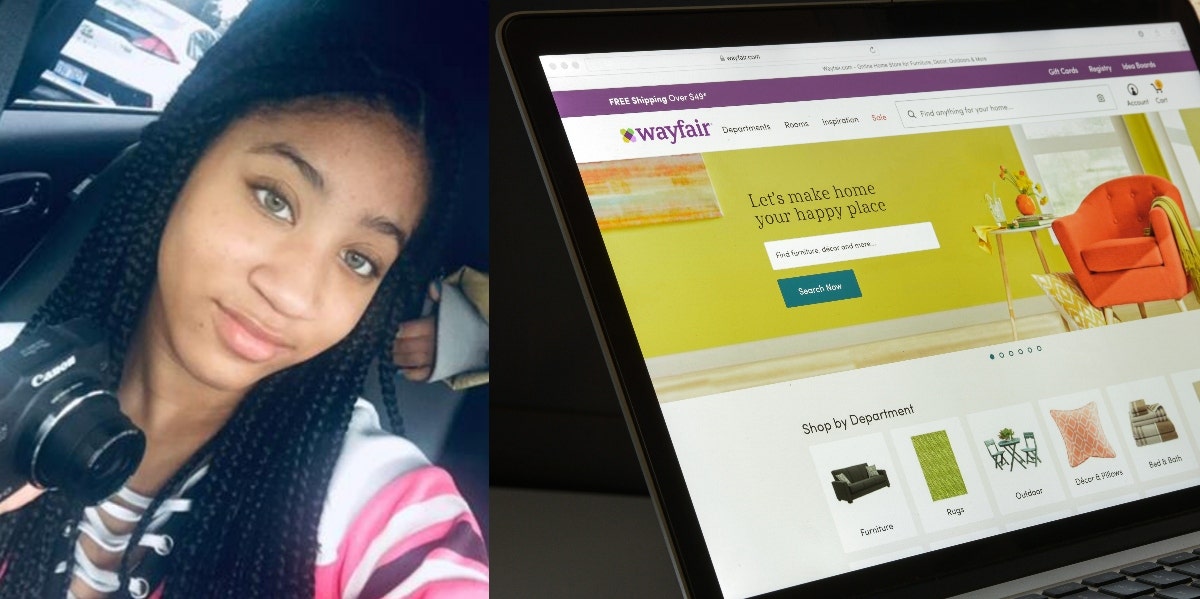
Who were the real victims?
By Amanda Hartmann — Written on Dec 20, 2021
Photo: Twitter / Casimiro PT / Shutterstock

A bit over a year ago, a QAnon conspiracy was running rampant across the internet.
As part of some kind of twisted spin-off of the group's "Pizzagate" theory, many began to believe that the e-commerce company Wayfair was behind a child sex-trafficking ring and that they were selling missing children hidden behind overpriced products as a façade.
Many people, mostly unaware of the origins of these posts or the dangerous misinformation contained within them, passed them along, thinking it wouldn’t hurt, until the conspiracy had gone completely viral.
The irony within this is that they ended up hurting the children they posted about and actual victims of sex-trafficking in the process.
Where did the Wayfair trafficking theory begin?
According to the Washington Post, the theories stemmed from a self-identified QAnon supporter who goes by Amazing Polly online.
The main theory, which you can read more about here, was that Wayfair was disguising kidnapped children as items such as cabinets and pillow, marked by “extremely high prices, all listed with girls’ names,” according to Polly. Polly’s twitter account and post have since been removed.
RELATED: Chinese Couple Reunite With Their Son 14 Years After He Was Abducted At The Age Of 4
Wayfair responded to these allegations by stating that these prices were high because the cabinets were industrial grade, but the conspiracy had already gotten out of hand, being spread and amplified by QAnon and concerned, uninformed people alike.
The teens whose names were linked to the Wayfair trafficking claims have spoken out against the allegations.
Theorists shared images of real children who had been missing, linking their names to Wayfair products.
However, what they didn't realize is the effect they were having on these kids, many of whom had long been back home with their families.
Samara Duplessis became wrapped up in the theory when someone shared her missing persons poster online alongside a $9,999 cushion on Wayfair called "Duplessis."
So Duplessis? You're not at all phased by that? Not even an eyebrow raised? For a pillow? pic.twitter.com/aTcMIV4Ovc
— PPC Langley-Aldergrove (@PPCLangley_ALDG) July 13, 2020
To her and her family — whom she was still trying to rebuild trust with after running away months before the theory began to circulate — the idea was terrifying. Despite her being safe at home now, her and her family began to worry over just how safe she truly was.
Samara’s mother, Tammy, began to worry if she could safely take her daughter out without something bad happening in line with this theory. Meanwhile, Samara had developed bad anxiety over the whole situation that she felt she had to hide from her parents.
RELATED: Inside QAnon’s ‘Serpent DNA’ Theory That FBI Say Influenced A California Dad To Kill His Two Kids
Many of the other once-missing children in the Wayfair conspiracy had to fight to convince people, both online and in person, that they were fine and not being trafficked.
However, the worst of the damage might have been to those actually caught in sex trafficking.
Another teen, Cameron Dziedzic recalls having the police called on him in Walmart even after he assured a woman who had recognized him that he was no longer missing and was not in danger.
One 18-year-old hosted a Facebook Live to assure followers that she was safe after her name was also linked to the Wayfair theory. Viewers weren't buying it.
“You’re mad because I’m telling you that I’m not missing?” she asked the 530,000 viewers of her live stream.
“Put her ass back in the cabinet,” one woman commented.
However, these kids weren't the only ones impacted by the theory.
The 'Wayfairgate' theory prevented actual victims of sex trafficking from getting help they needed.
One professional advocate, Katie Howard, lost her chance to help a real victim of sex trafficking that had showed up at an emergency room in Florida.
She tried to call the National Human Trafficking Hotline several times over the course of multiple days and sent a written request as well. But by the time Howard had gotten a response from an advocate, the women was gone, and she never contacted Howard again.
The advocate who responded, for her part, apologized and explained that they had been swamped with horrified callers who were hung up on wild theories akin to the Wayfair conspiracy.
Related Stories From YourTango:
As the Wayfair theory gained traction online, many people who stumbled across it were not satisfied with simply sharing it to spread the word.
The human trafficking hotline was overrun with callers and reports related to the unsubstantiated child trafficking claims online. Polaris, the nonprofit organization that operates the hotline, had been forced to regurgitate the same answers over and over again, while many of the actual victims, such as the woman in Florida, were forced to wait.
In a situation as high stakes as sex trafficking, getting someone help now versus later can make all the difference in the world.
Asking for help is scary enough, and if they are forced to wait for that help, it just gives them time to worry over all the possible ways it could go wrong.
So, while the theorists and social media users might believe they are helping those victims of sex-trafficking, it is always best to do research — and consider who exactly the theory takes the spotlight away from — before sharing conspiracies as lofty as this one.
Amanda Hartmann is a writer and editorial intern at YourTango who writes on news and entertainment.
